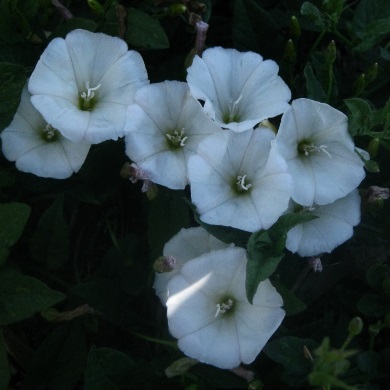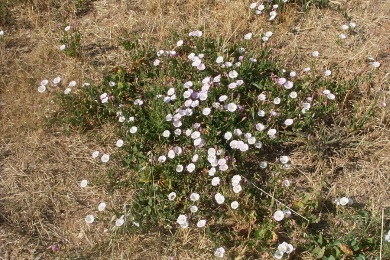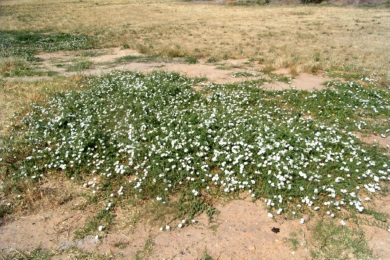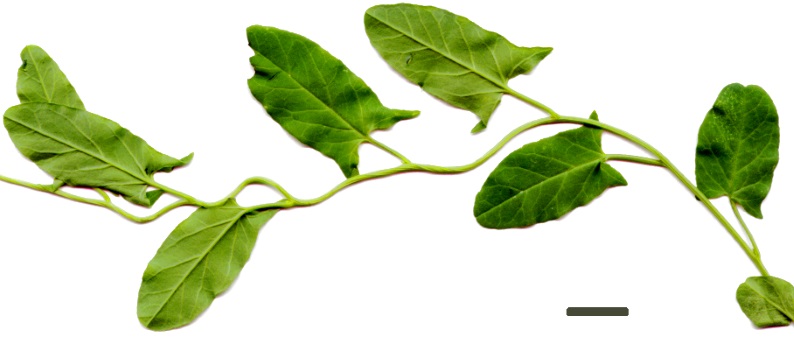
Other names: Bindweed, Field Bindweed.
Family: Convolvulaceae (Convolvulus family).
Native of Europe.
Occurrence: Widespread in weedy areas and along roadsides.
Identification:
- it is a twining prostrate plant that may cover several square metres
- the leaves are arrow-head shaped
- the sepals (green leaf-like structures just below the petals) are hairless
- the flowers are white or pale pink, and funnel-shaped.
Bindweed may be a troublesome garden weed. It has creeping roots, from which new plants can shoot. The plant is spread from seeds which may lie dormant for many years, and by cultivation, which may spread the roots from which new plants can grow. Common Bindweed is a Regionally Controlled weed in parts of Victoria. Common Bindweed does not climb by using tendrils but the whole plant twists about plant stems. It does not climb large plants.
Similar native species: The native Blushing Bindweed (Convolvulus angustissimus) is a widespread grassland species. It has bright pink flowers, narrower leaves, and hairy sepals, and does not have creeping roots.
convolvulus: from convolvulo, Latin, meaning intertwine arvenis: field.

 2,3: Common Bindweed. White Hills Cemetery.
2,3: Common Bindweed. White Hills Cemetery.
 4: The distinctive arrowhead leaves. Castlemaine.
4: The distinctive arrowhead leaves. Castlemaine.